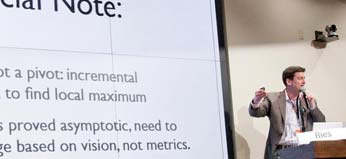lean startup,” that can make the process of startup companies less risky. It favors experimentation over elaborate planning, customer feedback over intuition, and iterative design over traditional “big design up front” development. Although the methodology is just a few years old, its concepts—such as “minimum viable product” and “pivoting”—have quickly taken root in the start-up world, and business schools have already begun adapting their curricula to teach them,” says Steve Blank, author of The Startup Manual. The Lean Startup methodology was first developed by Eric Ries. The following input is from his original article, Lean Startup Methodology before he wrote his book, The Lean Startup. “I’ve been thinking for some time about a term that could encapsulate trends that are changing the startup landscape. After some trial and error, I’ve settled on the Lean Startup. I like the term because of two connotations:
- Lean in the sense of low-burn. Of course, many startups are capital efficient and generally frugal. But by taking advantage of open source, agile software, and iterative development, lean startups can operate with much less waste.
- The lean startup is an application of Lean Thinking. I am heavily indebted to earlier theorists, and highly recommend the books Lean Thinking and Lean Software Development. I also owe a great debt to Kent Beck, whose Extreme Programming Explained: Embrace Change was my first introduction to this kind of thinking. (So far, I have found “lean startup” works better with the entrepreneurs I’ve talked to than “agile startup” or even “extreme startup.”)
- The use of platforms enabled by open source and free software. At the application-stack layer, I see LAMP + Danga as the most common combination. In recent years, we’ve also got great new options all up and down the stack, in particular things like Amazon EC2 and RightScale (none of which would be possible without the free software movement).
- The application of agile development methodologies which dramatically reduce waste and unlock creativity in product development. (See Customer Development Engineering for my first stab at articulating the theory involved)
- Ferocious customer-centric rapid iteration, as exemplified by the Customer Development process.
ELIMINATE UNCERTAINTY
The lack of a tailored management process has led many a start-up or, as Ries terms them, “a human institution designed to create a new product or service under conditions of extreme uncertainty”, to abandon all process. They take a “just do it” approach that avoids all forms of management. But this is not the only option. Using the Lean Startup approach, companies can create order not chaos by providing tools to test a vision continuously. Lean isn’t simply about spending less money. Lean isn’t just about failing fast, failing cheap. It is about putting a process, a methodology around the development of a product.WORK SMARTER NOT HARDER
The Lean Startup methodology has as a premise that every startup is a grand experiment that attempts to answer a question. The question is not “Can this product be built?” Instead, the questions are “Should this product be built?” and “Can we build a sustainable business around this set of products and services?” This experiment is more than just theoretical inquiry; it is a first product. If it is successful, it allows a manager to get started with his or her campaign: enlisting early adopters, adding employees to each further experiment or iteration, and eventually starting to build a product. By the time that product is ready to be distributed widely, it will already have established customers. It will have solved real problems and offer detailed specifications for what needs to be built.DEVELOP AN MVP
VALIDATED LEARNING
Progress in manufacturing is measured by the production of high quality goods. The unit of progress for Lean Startups is validated learning-a rigorous method for demonstrating progress when one is embedded in the soil of extreme uncertainty. Once entrepreneurs embrace validated learning, the development process can shrink substantially. When you focus on figuring the right thing to build-the thing customers want and will pay for-you need not spend months waiting for a product beta launch to change the company’s direction. Instead, entrepreneurs can adapt their plans incrementally, inch by inch, minute by minute.” Summary of Lean Startup Key Principles:- Entrepreneurs are everywhere
- Entrepreneurship is management
- Validated Learning-Startups exist to learn how to build a sustainable business. This learning can be validated scientifically, by running experiments that allow us to test each element of our vision.
- Innovation Accounting-To improve entrepreneurial outcomes, we need to learn how to measure progress, how to setup milestones, how to prioritize work. This requires a new kind of accounting, specific to startups.
- Build-Measure-Learn-The fundamental activity of a startup is to turn ideas into products, measure how customers respond, and then learn whether to pivot or persevere.
- Lean Startup Circle Wiki for Meetings
- The Lean Startup by Eric Ries
- Lean Startup Methodology by Eric Ries
- United States New E-governments Unit 18F Runs On Lean Startup Principles by Medna Basu
- Why The Lean Startup Changes Everything
- Lean Conference and website
- Lean Startup Circle Page – Great resource on Lean Startup
- The Lean Startup by Erick Ries
- Lean Thinking by James Womack
- Lean Software Development by Mary and Tom Poppendieck
- Lean Mindset: Ask the Right Questions by Mary and Tom Poppendieck
- Lean Analytics by Ben Yoskovitz and Allistair Croll
- UX for Lean Startups by Laura Klein
- Lean UX by Jeff Gothelf and Josh Seiden
- Running Lean by Ash Maurya
- The Lean Entrepreneur by Brant Cooper and Patrick Vlaskovit
- Extreme Programming Explained by Kent Beck and Cynthia Andres
- Business Model Generation: A Handbook for Visionaries, Game Changers, and Challengers by Alexander Osterwalder and Yves Pigneur

 +
+